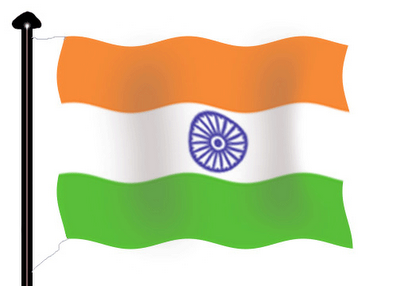Only 1025 mld capacity sewage treatment available along Ganga River: Centre
 New Delhi, Dec 14 : The Union Government on Monday revealed that sewage treatment capacity of 1025 mld is available against the requirement of about 3000 mld being generated in towns along the River Ganga.
New Delhi, Dec 14 : The Union Government on Monday revealed that sewage treatment capacity of 1025 mld is available against the requirement of about 3000 mld being generated in towns along the River Ganga.
To address this gap, the National Ganga River Basin Authority (NGRBA) resolved that by the year 2020, it would be ensured that no untreated municipal sewage or industrial effluent flows into the Ganga.
The Centre constituted the NGRBA in September as an empowered planning, financing, monitoring and coordinating authority for conservation of the Ganga River with a holistic river basin approach.
Union Environment and Forests Ministry said : “The investment required to create the necessary treatment and sewerage infrastructure will be shared suitably between Centre and States after consultation with the States Governments.”
Water quality monitoring carried out by reputed institutions indicated that, water quality of the river Ganga conforms to the prescribed standards in terms of key indicators, namely, Bio-chemical Oxygen Demand (BOD) and Dissolved Oxygen (DO) at most of the locations, except in the stretch between Kannauj and Varanasi in Uttar Pradesh.
However, the levels of fecal coliforms are reported to be exceeding the maximum permissible limit at a number of monitoring stations along the river Ganga.
The ministry has stated that action has been initiated for preparation of a comprehensive Ganga river basin management plan which will form the basis for formulation of projects.
Respective State Governments have been requested to prepare priority projects for critical pollution hotspots and major towns on Ganga and fast track the implementation of ongoing projects.
According to the fourth assessment report of the Inter Governmental Panel on Climate Change, the Himalayan Glaciers are receding faster than in any part of the world and, if the present rate continues, the likelihood of them disappearing by the year 2035 and perhaps sooner is very high if the earth keeps getting warmer at the current rate.
A National Action Plan on Climate Change was launched in June 2008 which envisages the National Mission for Sustaining the Himalayan Eco-system amongst its eight national missions. The mission would seek to understand weather and the extent to which the Himalayan glaciers are in recession and how the problem could be addressed.
A new research centre on Himalayan Glaciology has been established at Wadia Institute of Himalayan Geology, Dehradun. Guidelines and best practices for the governance for sustaining Himalayan Eco-system has been developed and shared with all State Governments in the Himalayan region, the ministry stated.
Cleaning of Ganga started in 1985 with the Ganga Action Plan (GAP) Phase I. GAP is a centrally funded scheme with the objective of improving the water quality of the Ganga.
Various pollution abatement works like interception and diversion of sewage, setting up of sewage treatment plants, low cost sanitation works, crematoria works, etc. were taken up.
GAP Phase – II included the major tributaries of Ganga namely, Yamuna, Gomti, Damodar and Mahananda, besides Ganga. GAP Phase II was merged with the National River Conservation Plan (NRCP) in December, 1996. (ANI)